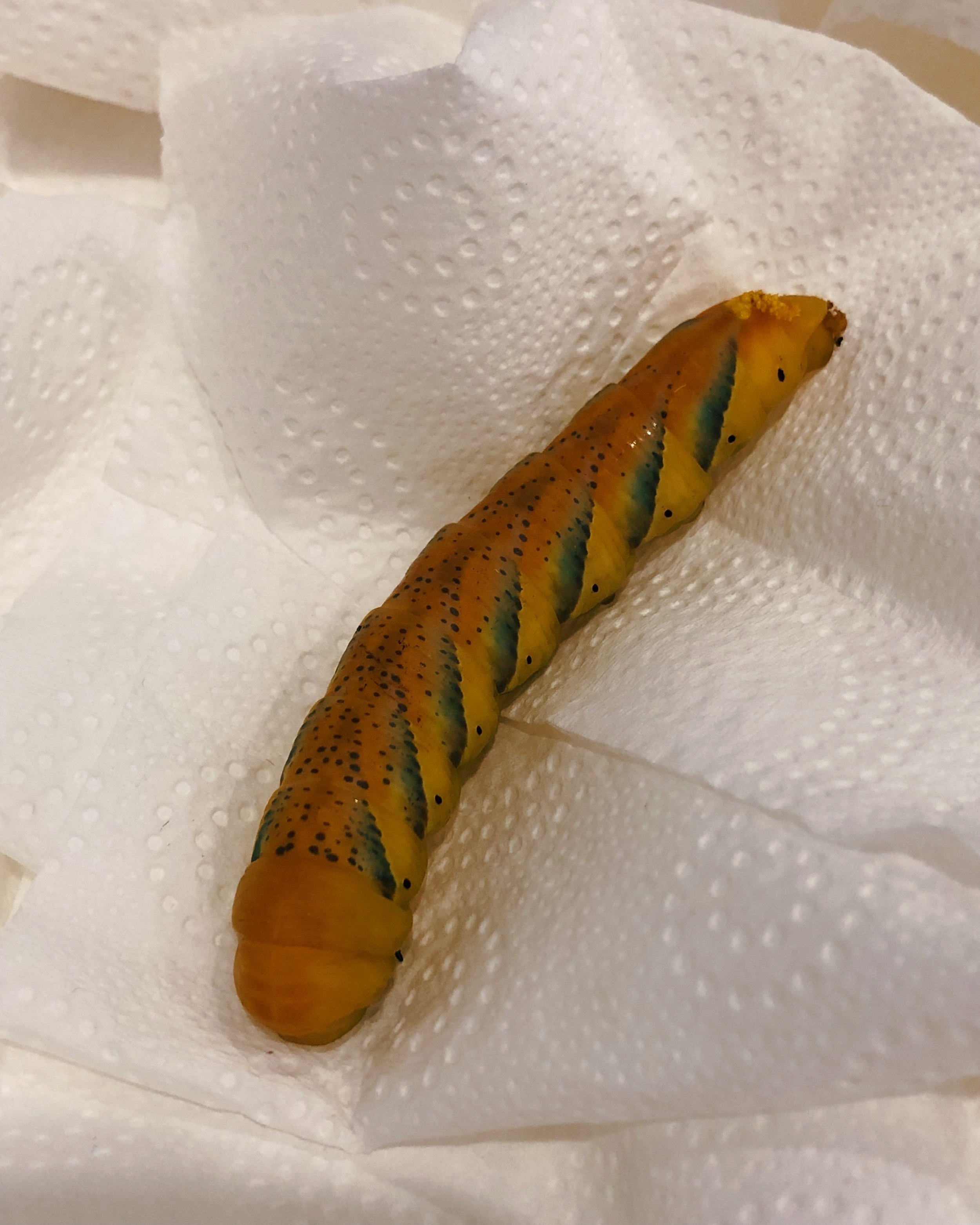Death’s Head Hawk Moth Care Guide
There are several species of Death’s Head Hawk Moths in the family Acherontia, however this guide refers to Acherontia atropos - the species generally kept in captivity.
This is a really easy and enjoyable species to rear at home. They do not reuire any special conditions, doing very well at room temperature.
Broadly following standard rearing methods will deliver very good results in this species. Young caterpillars should be kept in plastic containers, such as tupperware, as they are prone to drying out if kept in a net enclosure in open air.
Hatchlings begin feeding quite quickly, they accept several host plants, including Privet (evergreen), Lilac, Ash, Tomato, Potato, and other Solanacaea. In my experience, Privet is an excellent host plant and produces large moths. In the spring and summer, Lilac and Ash are also very useful, however should be avoided once the leaves start to turn in autumn as they become nutritionally poor.

The photo above shows caterpillars in the final instar, or stage, before pupating - often abreviated to L5 - and illustrates the three main colour forms. The most common colour in these caterpillars is a yellow body with bright turquoise-blue stripes and dots; a paler version of this also occurs, with a pale green body and green-blue stripes; whilst the other main type is brown and mottled, perhaps to disguise the larva as animal droppings. Typically most will be yellow form, with around 10% exhibiting brown colouration. The pale green colour is rarer and does not always appear - it may be influenced by environmental conditions as it seems more common in larvae that are wild or raised outdoors.
Once caterpillars reach maturity, they tend to look very full! The above left shows a caterpillar which has finished feeding. At this point, they take on a brown-orange colour (above: right), their legs become more stumpy, and they will begin wandering around the enclosure.
Death’s Head caterpillars burrow to pupate, building themselves an underground chamber after wandering for a day or two. In nature, this would obviously be in soil, however I prefer to move the caterpillars to a plastic storage bin with scrunched up newspaper or tissue paper. My personal experience using soil/compost is varied, but if you choose to use this it should be sterilised before by baking the substrate - this kills any bacteria, viruses, and other potentially predatory invertebrates.
If using tissue paper as a substrate, the caterpillars will tear this up, shredding it to form their chamber, within which they will pupate.
Pupation is usually complete in 7-10 days after burrowing, but allow 2 weeks before moving the pupae as they require time to harden. Pupae start off yellowish, and have a jelly-like look and feel, darkening to a brown colour as they solidify.
The pupae require little intervention, simply lay them out in an enclosure to emerge. The emerging moths require a surface to grip onto, to pull themselves out of the pupa, then to climb and suspend from - the moths will hang from the top of their enclosure whilst their wings expand and solidify.
Feeding these moths is essential, unlike Silkmoths which do not have functional mouth parts, atropos requires a nectar solution using either honey or sugar (50%). Typically they will not feed themselves in captivity, so will need to be hand fed - this is not difficult but may take a bit of practice: there are lots of videos on youtube demonstrating this process (search: hand feeding moths). The moths will squeak when handled!
Breeding can occur quite easily in this species, usually after a week or so. Egg production will be increased greatly with regular feeding, and can last a couple of weeks or more. Ultimately the moths are quite long lived, and may survive for several weeks, until breeding is complete. They require one of their host plants to lay eggs on (Buddleia seems to get the most eggs).
You can prevent breeding by separating the males and females after emerging, or simply freeze any eggs produced for 24 hours to sterilise them.





